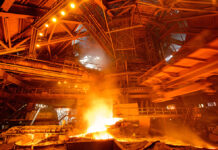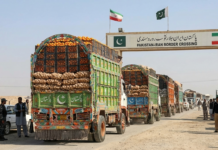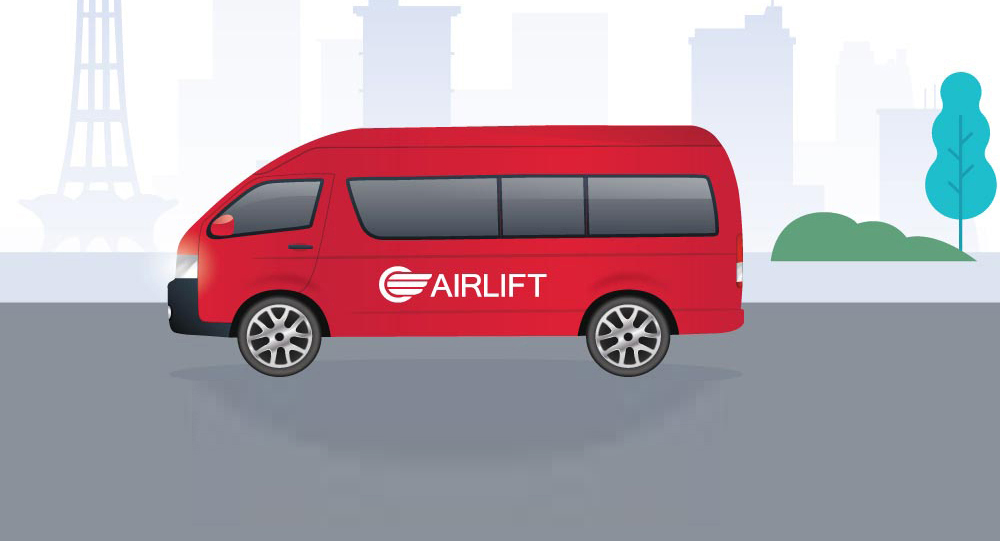Buses make sense. Global warming has you down? Run a high class public bus system and you have the answer. Need jobs? Buses need conductors and drivers as well as white collar workers in the transit authority. Cars are expensive? Just take a bus! Crumbling infrastructure? Reduce cars through buses and go easy on the roads.
But somehow or the other, even though they make all of this sense, buses also face great flak. The speedo buses in the Punjab, for example, caused murmurs and discontents after Shehbaz Sharif’s face was plastered on to every last bus. “What about health?” whispered the uncles, and who would fix the education system? Were buses the government’s priority or just something to tout come election time?
The reality is that buses are an important mode of public transport, and a subsidised provision of the government. A general misconception seems to be that public projects should be profitable. Quite to the contrary, they are loss making machines from the get go. The iconic London buses, a more expensive option to the tube, lose money like nobody’s business precisely because they are supported by the government as a public good.
The good that a solid system of public transport does cannot be understated. But with jangla bus narratives abound and subsidies being removed from metro systems, there seems little urgency in Pakistan to adopt a robust system of public transport. And much as all history has been witness to, when the public sector fails, the private sector steps in – and somehow makes money along the way.
In Pakistan, the sensational, genre bending, ride hailing start-up, Airlift Technologies, has big plans for the country’s transportation sector. With the required funding to oil the wheels available for at least some of those plans, Profit sat down with Airlift’s Executive Director, Syed Mehr Haider, who talked at length about these plans, what they may mean for public transportation in the country, and how the Airlift team is going to make money apart from external financing.
The master plan
If you do not know who you are looking for, you could walk in and out of the Airlift offices without giving a second thought to Usman Gul. In the middle of sharply dressed, suited up corporate types, he is a tame, rather inconspicuous presence. But this Lahori boy armed with an undergraduate degree from Denison University, has worked as an analyst for MasterCard’s Leadership Development Program, and as Senior Manager at the largest food delivery company in the United States, DoorDash. He is also the brain behind Airlift.
Upon his return to Pakistan from a successful education and professional careers in the states back in 2018, Usman enrolled in INSEAD Pakistan for his MBA in August, where he first came up with the idea for Airlift. During his time there, as part of a small team, he developed a core operating thesis on the basis that ride sharing can be a lot more efficient for all parties involved if only the size of the vehicle is increased. So consumed did he become with the idea that he dropped out of the MBA degree to pursue his thesis as an actual business venture. With his career in the states over and little help on his side, Usman was still just thinking about assembling a team when it assembled itself.

With the exception of one person, Ahmed Ayub, all the members of Airlift’s core team cold emailed Usman Gul and expressed their desire to become part of his initiative. These include Awaab Khakwany, Muhammad Owais, Zohaib Ali, and Meher Farrukh – all students of the Lahore University of Management Sciences.
Syed Mehr, the company’s Executive Director, attended Aitchison College before going on to the University of Toronto, and has significant experience in the Silicon Valley that spans almost a decade of managing human resources and business development with companies like PLOS, Esurance and AugmentCare. Put together, this cohort with international education and experience now feels proud to have brought it all back to Pakistan.
“This startup is Made in Pakistan. Our talent is all Pakistani. There are many companies from all over the world that have come to Pakistan and have worked very well. But our concept is that we are a Pakistani company that is going to go all over the world. Media channels from all over the world, including DealAsia [DealStreetAsia Magazine] or MENAbytes, have covered this story comprehensively. Ours is a Lahore-based company and its name is in San Francisco, India and will soon be everywhere” he says.
Going back to the origins of Airlift, Haider is quick to refuse any credit for the beginnings of the startup. “This is not my idea. I am part of the team. The company began six to eight months ago when Usman Gul realized that Pakistan needed [such a service].”
“Initially when the company started, it was getting very nominal number of rides per day. But then in only a matter of days, the trajectory got so good that the number of rides increased to 500 and then to 1,500. The growth was insane,” Haider says.
The hook(s)
In fact, it was the sort of growth that normally has companies scrambling to keep up with demand and follow a trajectory without losing their heads along the way. But Airlift seems to have kept a steady head. In the first round of funding, they raised $2.2 million from the Fatima Group and Gobi Partners, and Indus Valley Capital. The people involved who put their trust in Airlift include Atif Awan, a former senior executive at LinkedIn, and Ali Mukhtar, the managing partner at Fatima Gobi Ventures.
The second round, however, really put them on the block with a mammoth $12 million. This is the largest funding ever received by a Pakistani startup.

“The numbers that we had for the business project were so amazing that we landed investment for our business” says Haider. “The question is how to look at this investment and what benefits it holds. For one, we have set a great example for the startup ecosystem in Pakistan. We have a lot of startups in Pakistan, and our ecosystem is also growing day by day, but a VC fund in First Round Capital is the sort that invests in startups like Uber. Now an institutional investor of that level has shown interest in Pakistan, which is a big deal for Pakistan and for the startup ecosystem here.”
“Secondly our user base is 47% women, and that is another thing we are proud of. Usually women are not comfortable with mass transport systems, primarily because of security issues. We have a strong tracking system for the drivers and buses, and are especially happy to see women’s trust being built in our service.”
But the real attraction is the money. You can get on an Airlift bus at any of their stops, and get off on the other end of the city, all in Rs 50, with the comfort of air-conditioning to boot. And a short term unsustainable price as it may be, people are shifting to Airlift in hordes – including the 47% women they are so proud of.
While almost all new ride-hailing services entrants in Pakistan are aiming, or at least claiming, to provide transportation for women and to make their services cost effective and safe, Airlift is the first and the only one to have also come with the tag for a “cleaner and greener” service.
“When you ask me where this cleaner and greener Pakistan idea came from, it was always our mission to take on several issues. We want to provide transport to areas that are not yet being served by other businesses or public transport, we want to make it comfortable and trustworthy for women, and we want to do so in an environment-friendly way,” says Haider, who has previously said innumerable times on camera that “for every bus of Airlift, there are 10 [traditional] cars on the road.”
The latest Memorandum of Understanding (MoU) that the company signed with the Ministry of Science and Technology also includes a clause of them bringing the first ever battery powered buses in the country.
The feasibility
The promises and principles Airlift is championing are well and good, but it would be unwise to get side-tracked by the image a company is trying to build. Besides, there are only so many windmills one can tilt at, and in the modern world of business, you need to roll your sleeves up and ask how you are going to make money, while staying true to the message you are preaching.
Haider believes that even with traditional buses, traffic congestion will see a massive decrease. “That will not only solve traffic congestion but also carbon emission, the two major issues in Pakistan. Keeping that in view, we are a team that believes very strongly in a progressive Pakistan, we hope to resolve several issues at the same time.”
Airlift is not yet decided on the approximate ETA of battery powered buses at the moment, but they do know how they are going to navigate the market in the meantime. Their starting point is not those who already travel on the scantily available and overcrowded public transport, but those with means of either their own vehicles or other available services like Uber and Careem.
“The top 20% of the market in Pakistan is being looked after by Uber and Careem, the bottom 20% are being taken care of by Bykea etc. The 60% in the middle is still there. Then there are quite a few under-served [geographical] areas in Pakistan, even within metropolitan cities like Lahore. Even public transport cannot get to those areas that easily. That is where we are beginning.”
Airlift seems intent on an almost scientific business model. At least according to Haider, the percentages he gave here were not shots in the dark, but actual, hard data that Airlift has stored in detailed reports on Pakistan’s transport sector – numbers that have helped the startup to show potential to investors, which make them confidential data and research for Airlift as well.
If the target market is “middle and upper-middle socio economic strata”, then the fare of Rs50 might be misleading.
However, if you consider that it is only payable by cards at the moment, or bank cash deposit options, and that Airlift customers either need to have a debit or credit card or at their disposal or deposit cash in the Airlift Account which is then accordingly updated on their accounts, things get into perspective. These payment methods, at least for the time being cater only to the banked population or those with the know how of how bank accounts may operate, and not necessarily those who work on daily wages. In addition to this, they also need smartphones and stable internet. This fare is also not likely to stay at a blanket rate of Rs50 for much longer, like Metro for instance.
“For now we are using cards system, debit cards and credit cards. But we are also exploring other opportunities and down the line we will introduce more. For now the price is also only 50 rupees, irrespective of how long the journey, but that is the introductory price. With the passage of time, we will also refine distances and other factors, and introduce distance-based pricing. But even then it will be comparatively less than other ride-hailing services,” explains Haider.
On the drivers’ side, the company is not willing to divulge much at the moment, except that their communication takes place with transport managers instead of directly with the drivers, and that they are offering a uniform rate to these managers and then leaving them with the job of finding the required resources. Airlift General Manager Hurrieyeh Iftikhar said, “We ensure that the transport managers are following pilot on-boarding protocol. This helps us ensure due diligence in the process.”

Haider added, “The numbers are confidential at the moment but down the line I will be happy to share. For now I can tell you that we deal with suppliers and customers, our suppliers being the transport managers. We have a uniform package, I cannot share that with the media at the moment, but these transport managers follow our detailed questioning and screening process themselves and then for the drivers. We question people before we make them transport managers and then they follow our guidelines for drivers. They also fulfill our insurance and other quality demands and we also make sure that they follow those. But the model and money matters, we will hold on to that for now”.
There is also another factor, that with fewer vehicles out there, there are also far fewer captains. And with buses, you do not have the problem of people feeling like their cars are being overworked or misused. Set routes and a simpler app platform makes things much simpler on the captains end, and lower numbers indicates a difficulty for captains to organise. There is also no near-draconian ‘incentive’ system that would make those driving the buses work inhumane hours.
With all the good and the positive that team Airlift plans to bring to Pakistan’s transport sector, their arrival, operations, and future trajectory are still cause for worry for some, especially their competitors.
Profit interviewed CEO of Roshni Rides, Hanaa Lakhani, a while ago, and she had a lot to say about what is going wrong with Airlift. She said that Airlift even though cheaper is a model for men, its funding is a ‘celebrity play’ and the startup is “burning [money] just to keep its brand presence” while running empty buses. She also pointed out that Airlift’s technology is glitchy, and their tracking capabilities do not work.
Each of these questions were posed to Syed Mehr Haider, who maintained his cool and even managed a bit of cheek.
“First of all, Roshni Rides, thank you for your feedback,” he said. “Our technology is ever evolving and we try to resolve every customer’s concerns, and every query and complaint is being addressed on a daily basis. Our tracking capabilities are top-notch, but if any of our customers believes that it should be improved, we take that seriously and try to incorporate their suggestions”.
“Within a short span, our technology has improved massively and it is still constantly improving. The numbers that we have in such a short span of time are proof of that. But to answer her claim exactly, I would say that our company’s formula is based on customer feedback. I and other team partners also sit in our on buses and talk to customers to get their responses. Then there is also the rating system on our app. We take feedback very seriously. There is also the helpline people can call. We can also send us direct email and we have a team that is following that very vigilantly. So whatever your concerns are, please share them with us and we are more than happy to try and improve upon them.”
On the question of whether Airlift is more suited to male customers, Haider reiterated that half their customer body was already comprised of women, and that their tracking and security protocol is geared to constantly make the service more safe and comfortable for female passengers.
“I believe that our services are as much for women as they are for men because in Pakistan one of the biggest concerns is security and harassment, which does not give women that level of comfort with mass transport. In our model, we have proper check and track systems and we have proper databases for drivers. We also have a control room that monitors their movements. Even before they start driving to a certain location their movements are being tracked. Their customers [passengers] can also track where the buses are how long will it take for them to reach the pickup point and then throughout their journey” he explains.
“I will give you an example. If there is a lady working in Gulberg, and she gets off from work at 5:00, previously she might go to the bus station and wait for the bus which might or might not come at all. That is a huge concern. With our app, she can track the bus and know when it will arrive. Her seat will also be booked and confirmed. So there is also no chance of the bus being already filled without any seat available. All of this lends a higher comfort level for women, making Airlift as good an option for them as it is for men.”
Responding to Roshni’s jibe that brand presence was more important to Airlift than financial efficiency, Haider was candid.
“We do have the funds now to explore several avenues and to cater to different customers. Both [operational efficiency and brand presence] go hand in hand. You need to have an efficiently run business and brand presence at the same time. However, with us it is not like we are only focusing on just being there. In Karachi and Lahore we are getting very positive response, and our utilization rates are very high. In fact sometimes our buses get overbooked, but as I said before that in Airlift your seat is confirmed, and it is a demand-based model so if such a thing happens and a bus gets overbooked we do also have the capacity to send another bus at the same station at the same time.”
What about the public sector?
But it is not just the competition that has something to say or cause to worry because of Airlift. Their brand presence and forward thinking in the EV department means that there is apprehension among certain circles that are questioning whether or not this should exclusively be the government’s responsibility, and the dangers of allowing the private sector to take the lead on this. While Airlift’s MoU with the federal government has done little to ease these fears, Haider’s response to Profit might.
He dismissed the fears related to a private company taking up a public service with regards to Airlift, clarifying that the only way a private company would be able to take this responsibility is to privatize the entire sector. “We are working hand in hand with the government, complimenting their transport services and not as a replacement. Our goal is to revolutionize the mass transit system in Pakistan, and with the kind of funding we have right now, we are obviously exploring more avenues as well.”
But can a company funded externally and not dependent on their revenues for their continuity or profits be trusted to provide an efficient service?
“The ultimate goal and objective for any business is profit, and it is for us too. But the question is how to approach that? We are still exploring it,” Haider says.
“For now, our primary focus is on growth, and now that we have the required funding, our growth and profit targets can go hand in hand. Plus, expansion does not mean losses or inefficiency if you are getting positive results from the market. I cannot disclose the exact financial details, or even whether we are breaking even yet or not, but I will be able to do so in a short while once we have streamlined our processes, business model and matters related to fare and revenues.”


















